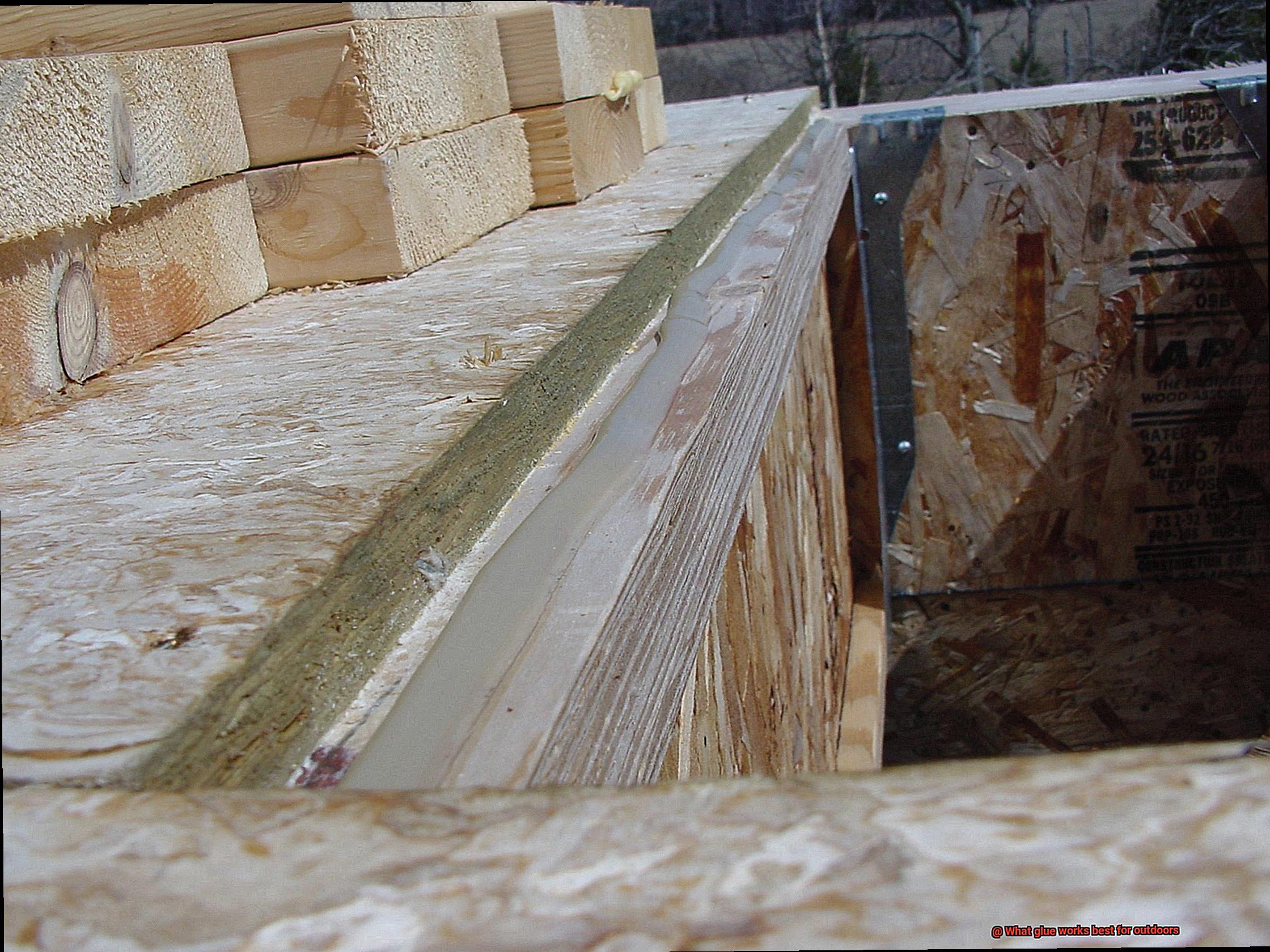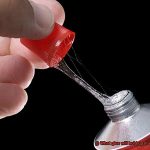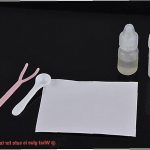Ah, the great outdoors. There’s nothing quite like breathing in that fresh air, basking in the sunshine, and feeling the wind in your hair. Whether you’re camping under the stars or trekking through rugged terrain, spending time outside is simply magical. But let’s be real – it can also be tough on your gear.
From backpacks to tents to shoes, outdoor equipment takes a beating. And when something breaks or tears, it’s not always easy to fix. That’s where glue comes in handy. But not all glues are created equal – some will hold up better than others in harsh conditions.
Have you ever tried using glue to repair something only for it to fall apart a week later? Or maybe you’ve struggled to get glue to stick properly to a surface. It can be frustrating, especially when you need your gear to withstand rain, wind, and whatever else Mother Nature throws your way.
So what type of glue should you use for outdoor repairs? There are plenty of options out there – from contact cement to epoxy – but not all will do the trick. In this blog post, we’ll dive into the best glues for outdoor use and share tips on how to prepare surfaces for optimal bonding. With our help, you’ll be able to patch up your gear with confidence and get back outside in no time.
What is Outdoor Glue?
Contents
Outdoor glue, also known as weatherproof glue, has got your back. This type of adhesive is specifically designed to withstand the elements and keep your outdoor items secure and intact.
There are several types of outdoor glue available in the market, each with its unique features and benefits. Let’s dive deeper into some of the most popular options.
Polyurethane-based glue is an excellent choice for outdoor projects. Its strong bond can resist water and extreme temperatures, while remaining flexible enough to accommodate movement. This makes it perfect for use on outdoor furniture, garden ornaments, and even vehicles.
Epoxy-based glue is the heavy-duty option for those looking for ultimate strength and permanent bonding. It can withstand even the harshest weather conditions and is ideal for use on items that require a lot of strength, such as metal or glass.
Silicone-based adhesives are the go-to choice for sealing gaps and preventing leaks in outdoor items. They provide flexibility and waterproofing, which makes them perfect for use on items that require such features.
When selecting an outdoor glue, it is crucial to consider the specific needs of your project and choose a product that can withstand the weather conditions in your area. Make sure to follow the manufacturer’s instructions carefully to achieve the best results.
Epoxy Adhesive
When it comes to outdoor projects, durability and strength are essential. That’s where epoxy adhesive comes in – a two-part adhesive made up of resin and hardener that sets to a rock-solid finish. As an expert in this field, I’m here to provide you with all the benefits and proper techniques for using epoxy adhesive outdoors.
Firstly, let’s discuss the advantages of using epoxy adhesive. Its high strength and durability make it an ideal choice for outdoor applications, able to withstand even the harshest weather conditions. Additionally, this adhesive is waterproof and temperature-resistant, meaning it can be used in areas exposed to moisture or extreme temperatures. Another benefit is its versatility – it can bond to a variety of surfaces including metal, wood, concrete, and plastic.

However, not all epoxy adhesives are created equal. When choosing a product for outdoor use, it’s essential to select one specifically designed for that purpose. Using an epoxy adhesive not suited for outdoor applications may result in break-down over time due to exposure to sunlight and moisture.
Now let’s dive into proper techniques for using epoxy adhesive outdoors. It’s important to always follow the manufacturer’s instructions carefully. This includes thoroughly mixing the resin and hardener together before application and ensuring the adhesive is applied in optimal temperatures and humidity levels. Proper application is key – if not done correctly, your project may not hold up to its fullest potential.
Polyurethane Adhesive
Polyurethane adhesive is a versatile and durable choice for outdoor applications. Its resistance to water, heat, and chemicals makes it a top pick for bonding a variety of materials like metal, wood, plastic, and concrete. But what sets polyurethane adhesive apart from other adhesives is its ability to cure in the presence of moisture. This means that even in wet or humid environments, the adhesive will continue to cure and strengthen over time.
In addition to its resistance to moisture, polyurethane adhesive also has a high resistance to UV radiation. This makes it an ideal choice for outdoor applications exposed to sunlight. Whether you’re repairing a boat or constructing a deck, polyurethane adhesive will hold strong against the elements.
Another benefit of polyurethane adhesive is its flexibility. Unlike some adhesives that lose bond strength when subjected to movement or vibration, polyurethane adhesive can handle stress without breaking down. This makes it an excellent option for construction or automotive applications where stress and movement are common.
When considering polyurethane adhesive for your outdoor project, it’s important to note that it comes in different forms. One-part formulations are ready to use straight out of the container and cure when exposed to moisture. Two-part formulations require mixing before use and have a faster curing time than one-part formulations.

Silicone Adhesive
Look no further than silicone adhesive – a superhero of the adhesives world. As an expert in this field, I can attest to the many benefits and considerations of using silicone adhesive for outdoor applications.
One of silicone adhesive’s key advantages is its exceptional resistance to extreme temperatures, moisture, and UV rays. It can withstand temperatures ranging from -65°F to 400°F, making it perfect for use in a wide range of weather conditions. Additionally, its ability to maintain flexibility and adhesion even in harsh outdoor environments makes it ideal for sealing around windows, doors, and roofing materials.
However, it’s important to note that not all silicone adhesives are created equal. When selecting a product for outdoor use, be sure to choose one that is specifically formulated for this purpose. Some silicone adhesives are designed for indoor use only and may not provide the same level of durability when exposed to outdoor elements.
Another crucial consideration is surface preparation. Before applying silicone adhesive, ensure that the surface is clean, dry, and free from any contaminants that could compromise adhesion. Using a primer or activator can also improve the bonding strength of the silicone adhesive.
In addition to sealing applications, silicone adhesive can also bond materials such as metal, glass, plastic, and ceramics in outdoor environments. Its long-lasting adhesion and sealing performance make it an excellent choice for boat repairs or deck construction.
Polyurethane Glue
Polyurethane glue, also known as Gorilla Glue, is a powerful adhesive that is perfect for outdoor projects. Whether you’re building a deck or repairing a fence, this type of glue offers several benefits that make it an ideal choice.
Firstly, its waterproof properties ensure that your project will be protected from water damage. This is especially important for outdoor projects that are exposed to the elements. Additionally, polyurethane glue can withstand extreme temperatures, making it suitable for use in various weather conditions.
Another advantage of using polyurethane glue is its strong bonding capacity. It can create a robust bond on a variety of surfaces such as wood, metal and plastic. Moreover, the glue expands as it dries, filling in any gaps or spaces between surfaces. This feature ensures that your project will stay intact and protected from moisture.
It’s important to note that polyurethane glue can be messy and tricky to work with due to its expanding properties. To avoid any mishaps, be sure to follow the manufacturer’s instructions carefully. This includes applying the glue in a well-ventilated area and allowing it sufficient time to dry before exposing it to water or extreme temperatures.
Considerations When Choosing Outdoor Glue
When embarking on an outdoor project, choosing the correct glue is vital for ensuring that your hard work remains intact despite the elements. As an expert on this topic, I’ve compiled a list of crucial considerations to help you select the best outdoor glue for your specific needs.
First and foremost, it’s essential to choose a glue specifically designed for outdoor use. Outdoor glues are formulated to resist UV rays, moisture, and temperature fluctuations, making them far more durable than regular adhesives. Therefore, check the label to ensure that your chosen glue is suitable for outdoor use.
Another factor to consider when choosing outdoor glue is the type of material you’re bonding. Different glues work better on certain materials than others. A waterproof wood glue would be ideal if you’re working with wood. Epoxy or super glue may be more appropriate if you’re attaching metal to plastic.
Application method is another crucial consideration. Some outdoor glues come in spray cans, while others require a brush or another applicator. Select an application method that suits the size and shape of the item you’re bonding to ensure that the adhesive is applied evenly and thoroughly.
Lastly, read the label and directions carefully before using any outdoor glue. Specific temperature or humidity conditions may be required for optimal bonding with some types of glue.
Others may have specific cure times or safety precautions. By following these instructions, you can ensure that your project will remain intact for years to come.
Benefits of Using Outdoor Glue
Let me introduce you to the superhero of adhesives – outdoor glue. This specialized glue offers numerous benefits over traditional indoor glues and can protect your hard work from the harsh elements of nature.
Firstly, outdoor glue is weather-resistant. It’s formulated to resist moisture, UV rays, extreme temperatures, and other environmental factors that can cause regular indoor glue to fail. This ensures that your outdoor project will remain intact even when exposed to the elements.
Secondly, outdoor glue is incredibly durable. Made from strong and robust materials, it can handle heavy use and abuse. The bond it creates is reliable and long-lasting, ensuring that your project remains strong for an extended period.
Thirdly, outdoor glue is versatile. It can be used on a variety of materials such as wood, metal, plastic, and glass, making it perfect for a range of outdoor projects like furniture repair, garden decoration, and boat building.
Fourthly, outdoor glue is water-resistant. It’s an excellent choice for projects that will be exposed to rain or moisture. This feature ensures that the glue will not break down or weaken when exposed to water – a common cause of project failure.
Lastly, outdoor glue offers excellent longevity. It can last for years without breaking down or losing its adhesive properties. This means that you can trust your outdoor project to remain strong and durable for an extended period without needing repairs or maintenance.
Tips for Applying Outdoor Glue
When it comes to applying outdoor glue, there are a few tips and tricks that can make the process smoother and more effective. First and foremost, it is crucial to ensure that the surfaces being bonded are clean and dry. Any dirt, dust, or debris can interfere with the adhesion of the glue and weaken the bond over time.
To achieve optimal results, wipe the surface down with a cloth or brush before applying the glue. Allow it to dry completely to avoid any moisture that can compromise the bond. Clean surfaces ensure a successful and long-lasting bond.
Another tip is to apply the glue evenly and avoid using too much. Over-applying glue can cause it to seep out of the bond and create a messy and uneven finish. This can be frustrating for DIYers who want their projects to look polished and professional. Using the right amount of glue is crucial for a strong bond.
It is also important to follow the manufacturer’s instructions for drying time and temperature requirements. Each outdoor glue has specific instructions for use that must be followed carefully to achieve the best results. Failure to do so could result in a weak bond or even failure of your project.
In addition, some outdoor glues may require specific conditions or primers in order to achieve optimal adhesion. For instance, some glues may require a rough surface for better grip, while others may require a specific type of primer for certain materials such as metal or plastic. It is vital to read the label carefully and follow any recommended preparation steps before applying the glue.
Lastly, it is essential to consider weather conditions when applying outdoor glue. Extremely high or low temperatures or humidity levels can affect the drying time and adhesion of the glue. Applying outdoor glue during mild weather conditions with moderate temperatures and low humidity levels will ensure optimal results.
Ccvj1sFWxw8″ >
Also Read: Best Glue for Twigs and Branches – Glue Things
Conclusion
In conclusion, selecting the right glue for your outdoor repairs is essential to ensure that your hard work withstands the elements. Outdoor glue, also known as weatherproof glue, is specifically designed to survive harsh outdoor conditions and keep your items secure and intact.
The market offers several types of outdoor glue, each with unique features and benefits. Polyurethane-based glue is an excellent choice for outdoor projects as it can resist water and extreme temperatures while remaining flexible enough to accommodate movement. Epoxy-based glue is a heavy-duty option for those seeking ultimate strength and permanent bonding. Silicone-based adhesives are perfect for sealing gaps and preventing leaks in outdoor items.
When choosing an outdoor glue, it’s crucial to consider the specific requirements of your project and select a product that can withstand the weather conditions in your area. It’s also important to follow the manufacturer’s instructions carefully to achieve optimal results.
Using outdoor glue provides numerous benefits over traditional indoor glues. It’s weather-resistant, incredibly durable, versatile, water-resistant, and offers excellent longevity. By ensuring clean surfaces before applying glue, applying evenly without using too much, following manufacturer instructions on drying time and temperature requirements, considering weather conditions when applying outdoor glue among others will guarantee optimal results.






